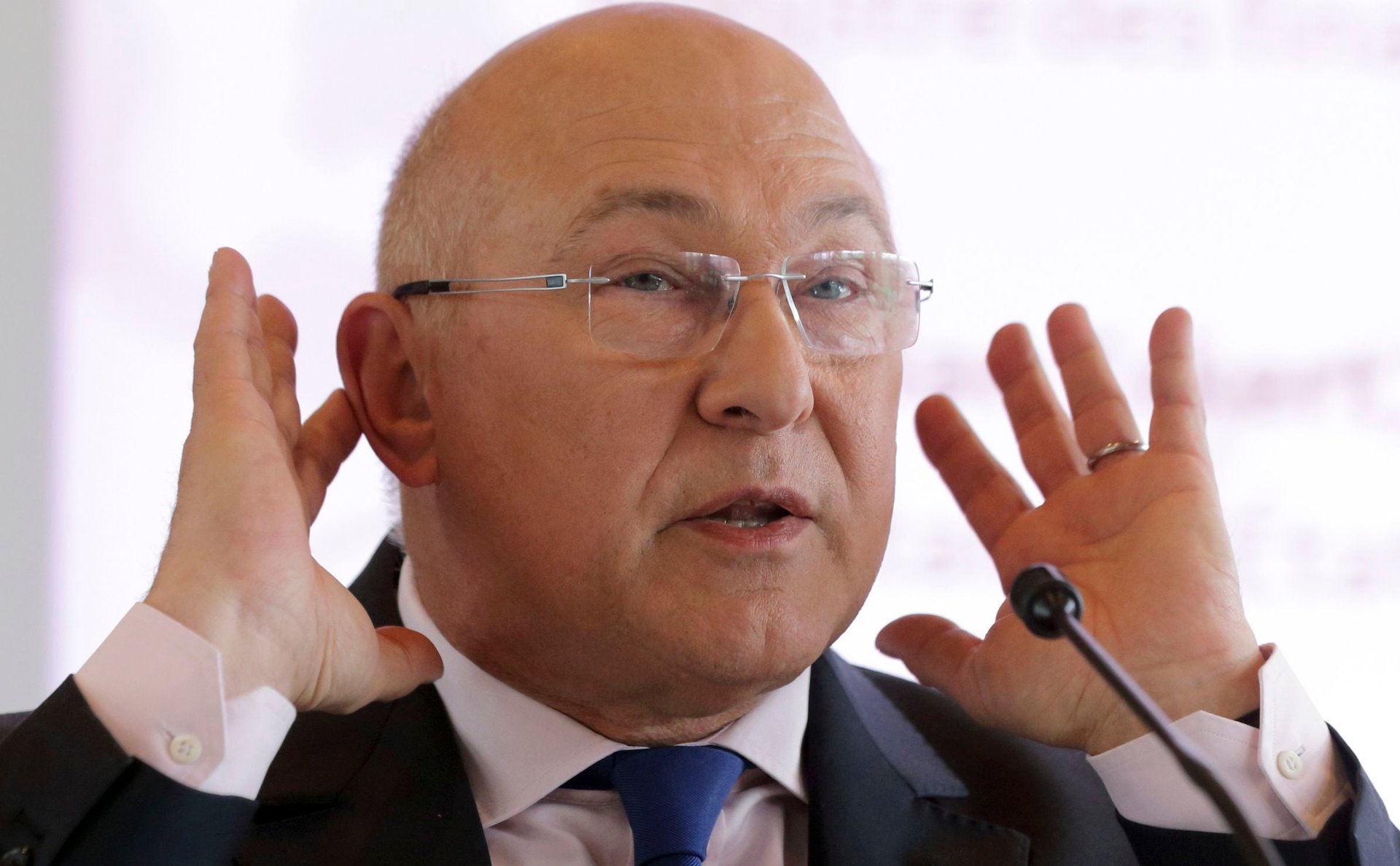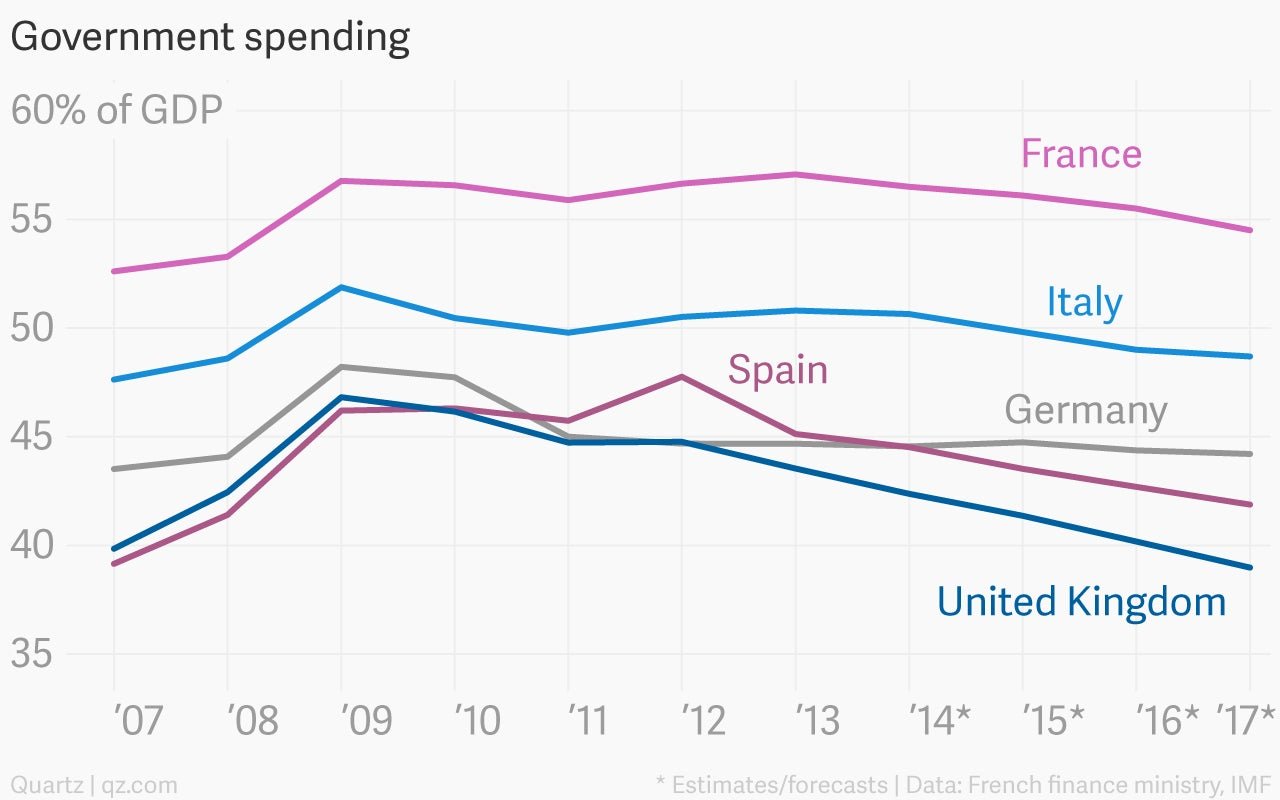France’s “unprecedented” public spending cut is actually just a lower increase
The French government unveiled its 2015 budget (pdf, in French) with a stern warning that enough is enough. The country “rejects austerity,” the finance ministry said, in a thinly-veiled attack on what it often portrays as a callous German invention. “No further effort will be demanded of the French.”


The French government unveiled its 2015 budget (pdf, in French) with a stern warning that enough is enough. The country “rejects austerity,” the finance ministry said, in a thinly-veiled attack on what it often portrays as a callous German invention. “No further effort will be demanded of the French.”
France promises to bring down its budget deficit to the EU-imposed limit of 3% of GDP, from around 4% today, by 2017. It had promised to get there by 2015, after getting a two-year extension from the previous deadline of 2013. This time, bien sûr, it means it.
To boost its budget balance, finance minister Michel Sapin (pictured above) unveiled plans for an “unprecedented” €50 billion ($63 billion) in cuts from previously projected public spending over the next three years. But in absolute terms, spending will still grow by 0.2% between now and 2017. The government’s projection for a fall in spending as a percentage of GDP is down to assumptions about GDP growth and inflation, both of which have surprised to the downside recently (which makes debt and deficit metrics look worse).
Even so, as a share of its economy, France’s outsized state will remain outsized—compared with its neighbors, its supposedly unbearable budget squeeze looks more like a light pinch:
